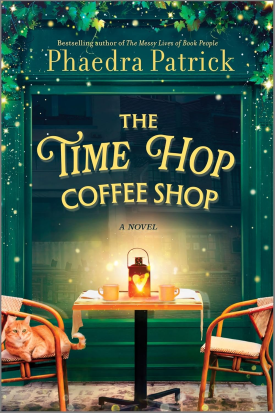Beatrix Potter Books In Order
Book links take you to Amazon. As an Amazon Associate I earn money from qualifying purchases.Publication Order of Picture Books
| The Tale of Peter Rabbit | (1901) | Description / Buy at Amazon |
| The Tale of Squirrel Nutkin | (1903) | Description / Buy at Amazon |
| The Tailor of Gloucester | (1903) | Description / Buy at Amazon |
| The Tale of Benjamin Bunny | (1904) | Description / Buy at Amazon |
| The Tale of Two Bad Mice | (1904) | Description / Buy at Amazon |
| The Tale of Mrs. Tiggy-Winkle | (1905) | Description / Buy at Amazon |
| The Tale of The Pie and The Patty-Pan | (1905) | Description / Buy at Amazon |
| The Story of Miss Moppet | (1906) | Description / Buy at Amazon |
| The Tale of Mr. Jeremy Fisher | (1906) | Description / Buy at Amazon |
| The Story of A Fierce Bad Rabbit | (1906) | Description / Buy at Amazon |
| The Tale of Tom Kitten | (1907) | Description / Buy at Amazon |
| The Tale of Jemima Puddle-Duck | (1908) | Description / Buy at Amazon |
| The Tale of Samuel Whiskers or the Roly-Poly Pudding | (1908) | Description / Buy at Amazon |
| The Tale of the Flopsy Bunnies | (1909) | Description / Buy at Amazon |
| The Tale of Ginger & Pickles | (1909) | Description / Buy at Amazon |
| The Tale of Mrs. Tittlemouse | (1910) | Description / Buy at Amazon |
| The Tale of Timmy Tiptoes | (1911) | Description / Buy at Amazon |
| The Tale of Mr. Tod | (1912) | Description / Buy at Amazon |
| The Tale of Pigling Bland | (1913) | Description / Buy at Amazon |
| Appley Dapply's Nursery Rhymes | (1917) | Description / Buy at Amazon |
| The Tale of Johnny Town-Mouse | (1918) | Description / Buy at Amazon |
| Cecily Parsley's Nursery Rhymes | (1922) | Description / Buy at Amazon |
| The Fairy Caravan | (1929) | Description / Buy at Amazon |
| The Tale of Little Pig Robinson | (1930) | Description / Buy at Amazon |
| Peter Rabbit Peek Through Board Books: Mice | (1996) | Description / Buy at Amazon |
| The Tale of Kitty In Boots | (2016) | Description / Buy at Amazon |
| The Christmas Present Hunt | (2021) | Description / Buy at Amazon |
Publication Order of Collections
| Little Red Riding Hood: The Ultimate Collection | (1697) | Description / Buy at Amazon |
| Great Big Treasury of Beatrix Potter | (1992) | Description / Buy at Amazon |
| Peter Rabbit and Eleven Other Favorite Tales | (1993) | Description / Buy at Amazon |
| Fairy Tales for Adults | (2018) | Description / Buy at Amazon |
Publication Order of Anthologies
Beatrix Potter
Helen Beatrix Heelis, known to the world as Beatrix Potter, was an English illustrator, author, and artist. She also studied nature and worked to protect the land. Her stories for children often starred animal characters. Her very first book to be sold in shops introduced everyone to Peter Rabbit.
This writer had a special skill for making her animal characters feel real and full of life. She built engaging stories around these protagonists that pulled readers into their worlds. Her tales were crafted with a narrative flow that kept them entertaining. This enjoyable quality is clear as her books, like those about Jemima Puddle Duck or Tom Kitten, have delighted millions.
Beatrix Potter was also a clever businessperson ahead of her time. She was a true pioneer in the world of character merchandise. The famous rabbit Peter was the very first fictional figure to become a patented stuffed toy. That early start made this particular rabbit the oldest licensed character ever.
She created more than sixty books. Her twenty-three children’s stories became the most famous. These tales found a global audience because they felt genuine. They reflected her own deep appreciation for the natural world and country life.
Her personal life became deeply connected to the Lake District. She used money from her books to buy Hill Top Farm. Later, she bought more farms to protect the landscape. She married William Heelis, a local solicitor, and became a respected farmer herself.
Potter was a dedicated farmer who raised prize-winning sheep. She cared greatly about protecting the land. For years, she kept creating new stories and artwork. Eventually, managing her property and her failing eyesight slowed her work.
Her literary creations remain enormously popular across the globe. The stories continue to be reprinted and rediscovered by new generations. Her original farmlands were given to the National Trust upon her passing. This generous gift helped preserve the beautiful landscapes that first inspired her work.
Early and Personal Life
Born in the 28th of July, 1866, Beatrix Potter was an English writer and artist. She also had a deep interest in nature and its protection. Her family background was in the Manchester area, with connections to influential nonconformist religious groups.
Her grandfather, Edmund Potter, operated a very large calico printing works. He also later served as a Member of Parliament. This industrial and civic family environment was part of her early world.
Beatrix Potter kept writing and drawing for her own enjoyment later in life. She released new books, including a collection of nursery rhymes and a story set in her local landscape. She and her husband, William Heelis, shared a very happy thirty year marriage filled with farming and conservation work. They had no children of their own, but she was a supportive and beloved aunt to her husband’s nieces and nephews.
Writing Career
Beatrix Potter’s writing was shaped by classic fairy tales and fantasy from a young age. She was an avid reader of European folklore, Aesop’s Fables, and the works of authors like Lewis Carroll. Her early artistic efforts involved drawing her own pets and illustrating traditional stories, which honed her unique style.
Her professional career began with creating artwork for commercial greeting cards. The famous story of Peter Rabbit started as an illustrated letter to a sick child. She initially published ‘The Tale of Peter Rabbit’ herself, but it was soon picked up by Frederick Warne & Co., launching her series of twenty-three beloved little books. Her success stemmed from her lively animal characters and engaging stories set in the rural countryside.
The Tale of Peter Rabbit
This classic children’s picture book was written by Beatrix Potter, and it was Frederick Warne & Co. who originally published this work in October of 1902. This book served as the inaugural entry in the celebrated series known as The World of Beatrix Potter.
The story follows a young mischievous rabbit called Peter. He disobeys warnings and enters a farmer’s garden. This choice leads the rabbit into considerable trouble. First published in 1902, this was the initial book in Beatrix Potter’s famous series. The tale remains a popular and enduring classic, enjoyed by generations of readers.
Generations of young readers have found this classic tale about a mischievous rabbit to be a completely delightful experience. The charming story of Peter Rabbit’s garden adventure is universally engaging. Its beautiful illustrations and simple, timeless narrative are widely appreciated. Many consider it a truly wonderful and enjoyable book for all ages.
The Tale of Mrs. Tiggy-Winkle
Authored by Beatrix Potter through the publisher Frederick Warne & Co., they released this title in October 1905. It holds the position of being the sixth story published within the series known as The World of Beatrix Potter.
The story introduces a girl named Lucie from Little-town farm. She finds a small hidden home in the hills while searching for her lost handkerchiefs. Inside, she meets Mrs. Tiggy-winkle, a washerwoman who does laundry for the local animals. After a pleasant day helping, Lucie realizes this kind, prickly woman is not entirely what she appears to be.
Once again, children would find this gentle story about Lucie and her discovery utterly charming. The encounter with the unique washerwoman, Mrs. Tiggy-winkle, is a highlight for many. Its gentle mystery and lovely illustrations are widely appreciated. It is considered a truly delightful and heartwarming tale for new readers.
The Tale of Jemima Puddle-Duck
Beatrix Potter’s classic children’s story would be published in October 1908. It was the twelfth book in her series.
Jemima Puddle-Duck simply wants to find a safe spot to hatch her own eggs. She encounters a charming gentleman who offers his shed. Unaware he plans a roast duck meal, she is saved by the sheepdog, Kep. This duck was based on a real animal from Beatrix Potter’s farm.
This story about Jemima Puddle-Duck is widely considered a charming adventure. Younger readers again often appreciate its engaging narrative and the duck’s memorable rescue. It remains a very popular and well-liked book.
Book Series In Order » Authors »


 Any issues with the book list you are seeing? Or is there an author or series we don’t have? Let me know!
Any issues with the book list you are seeing? Or is there an author or series we don’t have? Let me know!